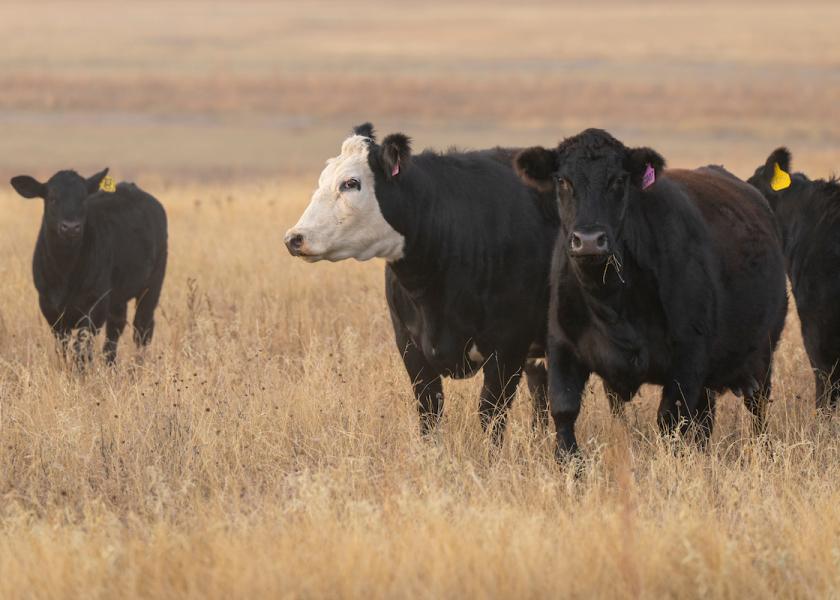‘It’s Not the Cow; It’s the How’

Researchers at the Texas A&M AgriLife Center for Grazinglands and Ranch Management are investigating the impact of grazing practices on the long-term sustainability and biodiversity of landscapes enrolled in the U.S. Department of Agriculture’s Conservation Reserve Program.
Supported by the USDA Farm Service Agency, the project will focus on adaptive grazing practices such as managed timing, intensity, frequency, duration and resting period.
About the Conservation Reserve Program
“The Conservation Reserve Program continues to be one of the signature conservation efforts of the USDA,” said Jeff Goodwin, Ph.D., director of the Center for Grazinglands and Ranch Management, Bryan-College Station. “The effort has a 38-year legacy of successfully protecting the nation’s natural resources while providing significant economic and environmental benefits to rural communities across the U.S.”
Established in 1985, the Conservation Reserve Program, or CRP as it is commonly known, is one of the nation’s largest private-land conservation programs with more than 23 million acres enrolled across the U.S.
Through contracts varying in length from 10 to 15 years, voluntary participants agree to remove environmentally sensitive cropland from agricultural production and devote the land to the long-term conservation of grasslands, soil health, water quality and wildlife habitat. In return, these landowners receive annual payments and cost share assistance to implement conservation-based management practices.
Texas’ enrolled landscapes
In Texas, more than 90% of the roughly 2.7 million acres enrolled in the Conservation Reserve Program are in the High Plains and Rolling Plains ecological regions.
Due to this density of enrolled properties, Goodwin and research partners in the Texas A&M College of Agriculture and Life Sciences will focus their studies within these regions.
Collaborating researchers include Katie Lewis, Ph.D., Texas A&M AgriLife Research soil chemistry and fertility scientist and associate professor in the Department of Soil and Crop Sciences, Lubbock, and Stephen Webb, Ph.D., Texas A&M Natural Resources Institute research assistant professor in the Department of Rangeland, Wildlife and Fisheries Management, Bryan-College Station.
Grazing exclusion and grassland trends
Since its inception, the Conservation Reserve Program has excluded grazing on enrolled lands with certain exceptions for emergency drought and disaster events or biennial grazing regimes outside of the grassland bird nesting season. Producers who do graze at a reduced stocking rate during the primary nesting season generally receive a 25% reduction in their annual payment from the program.
Historically, grassland ecosystems were maintained by periodic disturbances in the form of fire and grazing ruminants such as bison.
Goodwin said the removal of these disturbances can lead to the proliferation of less-desirable vegetative communities. Woody encroachment, land conversion, land fragmentation, invasive species and poor grazing practices have also contributed to the precipitous decline in native grassland health, as well as the avian species that depend on them.
“There is a common misconception that cattle production and conservation cannot coexist and have mutually exclusive goals,” Goodwin said. “But as the adage goes, ‘it’s not the cow; it’s the how.’”
Goodwin said an increasing amount of scientific research suggests that by focusing on ecological principles, grazing animals become yet another tool in the toolbox to help conserve and manage wildlife habitat and other ecosystem processes.
Boots and hooves on the ground
Specifically, researchers are seeking to answer three key questions related to lands enrolled in the Conservation Reserve Program:
- Can adaptive grazing management provide greater ecosystem and climate change mitigation benefits than biannual grazing or grazing exclusion?
- Are the conservation and ecosystem benefits of adaptive grazing management influenced by native versus introduced grass species?
- Can grassland birds be used as an indicator metric for the health and function of Conservation Reserve Program lands in the Texas High Plains?
To find these answers, over the next five years researchers will employ and replicate a variety of land management treatments across 18 properties enrolled in the program. These different management treatments include grazing exclusion, as well as alternative year grazing and adaptive grazing management techniques.
This investigation will enable researchers to collect valuable data on soil organic carbon and microbial activity, vegetation composition and structure, plus the presence or absence of high-priority avian species.
“Information gained from this study will benefit a number of stakeholders by providing data-driven insights and scientific evidence to inform Conservation Reserve Program policy on the ecologic outcomes associated with the implementation of grazing management,” Goodwin said. “Ultimately, this study will continue to inform the scientific literature serving as a scientific basis of support for the conservation of working lands in the U.S.”







